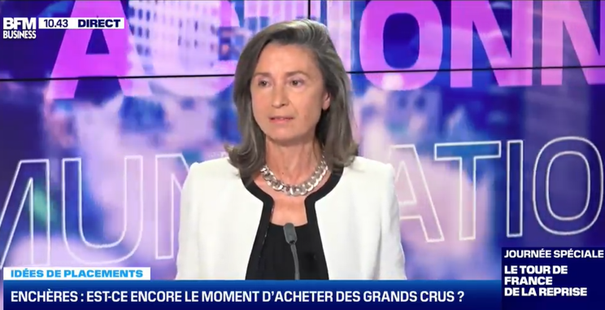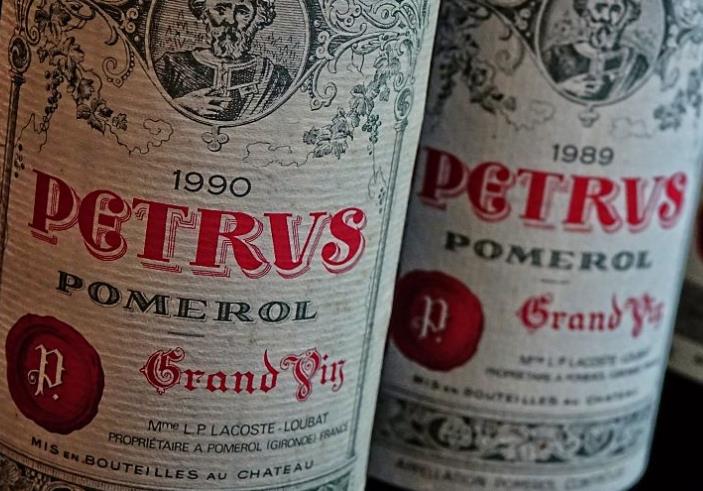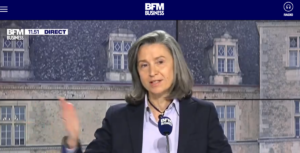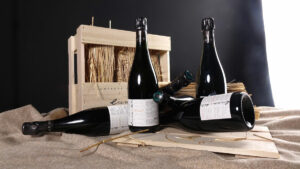
Every month, iDealwine co-founder Angélique de Lencquesaing gives an overview of the wine market from an investment point of view. On BFM’s 100% Patrimoine programme, she answers questions from Cédric Decoeur.
With the end-of-year period just around the corner, let’s get an update on the fine wine auction market.
Seasonality is still a factor in the wine auction market, which is why there is always some preparation needed for the end of the year, but we’ve noticed that the time of year has less and less of an effect as the years go on. Holding auctions online means reaching an increasingly global market.
Does this mean there’s no longer a ‘good’ or ‘bad’ time to sell?
Auctions are held all the way through the year, and it was actually in the middle of the summer that we got a record bid of €28,244 for a 2006 Musigny from Leroy (which you can read more about here). For our top bid to go under the hammer on the 29th of July is quite telling of this shift in trends.
That’s true. And we saw, even before the summer, that there was huge interest in the fine wine market. How are things looking now?
There’s still a lot of enthusiasm for wine auctions, particularly for the fine bottles that can be bid on. The rate of bottles sold (out of those put up for sale) has never been so high. In our last auction, we sold 82% of the lots that were put up for auction. This was a first!
How do you explain this rush to the auction market?
There are three possible explanations for this. The first one is directly linked to the pandemic, which has seen people raiding their cellars on the one hand, and turning to online platforms on the other. Many picked up these habits over the past few years and, even with the world opening up again, they’ve kept up their new ways of doing things.
Another explanation might be that more people are investing thanks to not spending so much money in recent times. Without as many outings or travels, some will have a bit more to spend on other kinds of investment. Wine could well be one of these.
Thirdly, a much less joyful prospect. The 2021 vintage has been problematic to say the least, with quite a lot of domains bringing in a miniscule harvest this year. In Burgundy, for example, the vineyards suffered so much from frost spells that Chardonnay yields have been hugely reduced. With this in mind, there are likely to be some buyers seeking to purchase already-available vintages. This creates an imbalance between supply and demand, which is ready to become an issue on a global scale.
This imbalance has indeed led to price rises. Is this a general trend?
Realistically, the question of supply and demand depends on the region, the wine, the vintage. One good indicator of notable movement in the market is any lot with a high number of bids placed on it. In our auctions, the lots are put up for sale with a starting price a little under the estimated value. This estimated value has to be updated at a faster pace for certain labels that are highly coveted. Unsurprisingly, Burgundy takes the crown for the region with the highest proportion of lots receiving more than one bid. In fact, ¾ of Burgundy bottles have more than one bid on our site.
So Burgundy is the most present region in your auctions then?
In terms of volume sold, it’s actually in second place at the moment. There’s one name on everybody’s lips at the moment: Domaine d’Auvenay, an estate belonging to Domaine Leroy’s Lalou Bize-Leroy. Auvenay’s Puligny-Montrachet cuvées have seen their value skyrocket to over €6,000 a bottle, whilst the ‘simple’ Aligoté has crossed the threshold of €3,500 a bottle. We’ve had buyers of these two cuvées from France and the UK.
Is Domaine de la Romanée Conti still on its upward trajectory, too?
Prices have steadied quite a lot for this estate, at a high level. In the Côte de Nuits, prices have stayed high for wines from Domaine Bizot, Domaine Truchot, and Armand Rousseau. There has also been a lot of interest in Domaine Bruno Clavelier, a biodynamic estate in Vosne-Romanée.
Do we see lots of bids on Bordeaux wines, too?
Almost half of the Bordeaux bottles we put up for auction get more than one bid, thus selling for a higher price than its lower estimate. For this region, mature vintages attract the most interest. We’ve seen the value of bottles from the 1980s go right up (1982 Vieux Château Certan, 1982 Petrus, 1989 Léoville Barton). Bordeaux is also coveted for its dessert wines, especially as the festivities draw near. Recently, some half-bottles of Doisy-Daëne’s Extravagant cuvée sold for between €258 and €270 in their 1990, 1996, and 1997 vintages.
And how about in the Rhône?
Currently, 2/3 of the cuvées we auction from the Rhône get more than one bid. Château Rayas continues to see its value increase (1998: €1,830), and prices remain high for cuvées from collectors’ estates like Dervieux Thaize, difficult-to-find names like Gourt de Mautens, and even some natural wines like those of Thierry Allemand.
Is natural wine a big phenomenon at auction?
Certain estates in the Jura, like Domaine des Murmures, and in the Loire, such as Clos de la Néore and Domaine du Collier, are certainly getting their names out there. But it’s actually Beaujolais’ natural wines that are seeing especially dynamic results at auction.
Beaujolais?
Yes, since the beginning of October, around 50 lots from this region went under the hammer, 80% of which sold for over its lower estimate. All of them are from estates that use natural methods in their growing and vinification (Foillard, Lapierre, Métras, Chamonard). Vintages from the beginning of the 1990s are the most coveted.
It seems like wine from every region is selling like hot cakes! Is now the right time to buy with the view to investing?
It’s true that no region is untouched by this bidding trend, and this is a good sign for the market. In the Languedoc, for example, La Grange des Pères is still seeing the value of its wine increase, as is the case for its neighbour, la Bergerie de l’Arcade.
From outside France, Italian wines such as those from Rinaldi and Gaja, South Africa’s Klein Constantia, and Chilean Almaviva are all causing some exciting bidding wars.
I’d say it’s a good moment to invest, especially as the year starts to draw to a close, as there’ll be even more opportunities than usual to get your hands on big names. December auctions always attract the attention of wine lovers, and for good reason. This is when many of the biggest names will feature, some of them in generous formats, too.
Which regions are most interesting from an investment perspective?
It’s important to remember that these purchases shouldn’t just be about investing. Buyers should pick wines that they’d love to taste one day, in case the market doesn’t turn out to be in their favour. There are three main guidelines to keep in mind, though: picking a cellaring vintage, having a cellar with good conditions, and bearing in mind the scores given by top tasters.
Looking at the regional share of sales at iDealwine from last year, an optimal cellar should be made up of 1/3 Bordeaux grands crus, 1/3 good Burgundy, around 10% Rhône cuvées, then a pick of your favourites from the Loire, Champagne, the Jura, Alsace, the Languedoc, Beaujolais, and the South (Provence, Corsica). Keep aside a spot for non-French wines, too!
See all our current auctions here
Find out more about selling your cellar



